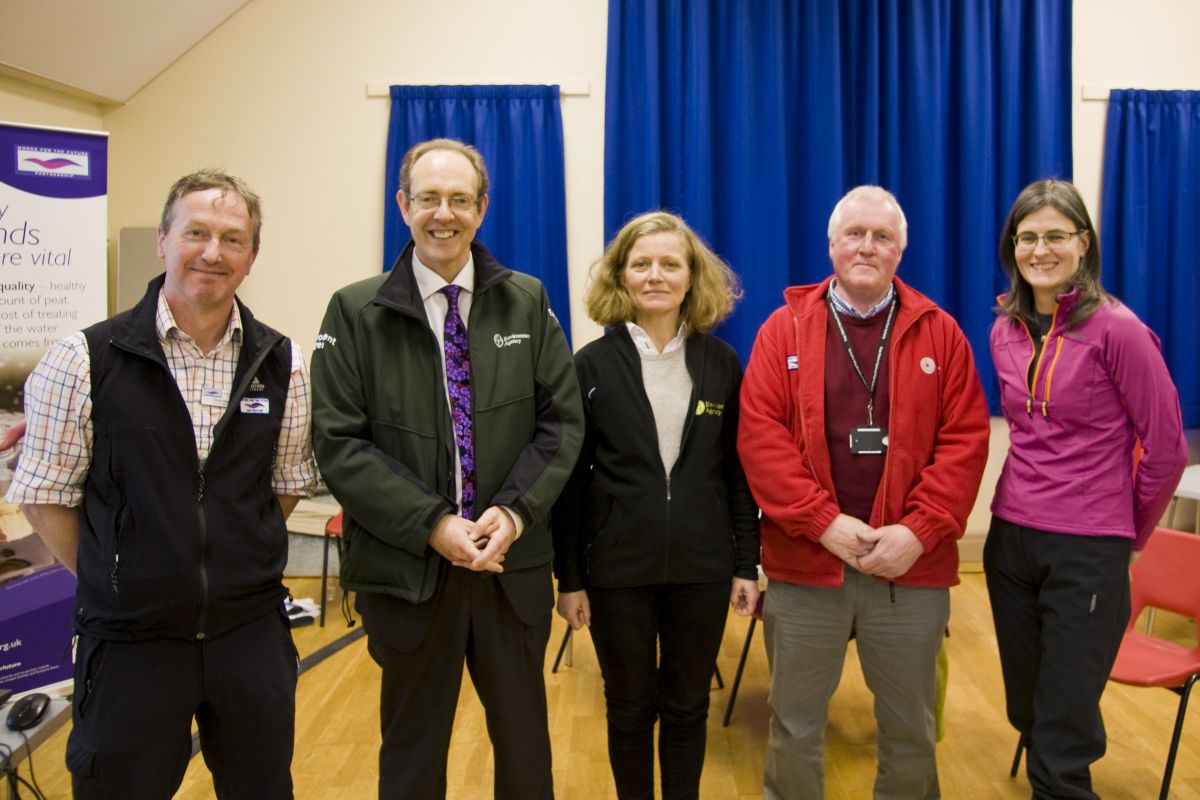Sir James Bevan is today visiting uplands in the Peak District National Park to see firsthand how the Environment Agency’s investment is supporting the Moors for the Future Partnership in reversing the effects of hundreds of years of industrial pollution and helping to reduce flood risk.
 The partnership is leading a series of visits for Environment Agency staff to moorlands in Derbyshire, near to Sheffield, where conservation work has transformed the peat landscape that had been damaged by more than 150 years of pollution from coal-fired factories on either side of the Pennines, and devastating wildfires.
The partnership is leading a series of visits for Environment Agency staff to moorlands in Derbyshire, near to Sheffield, where conservation work has transformed the peat landscape that had been damaged by more than 150 years of pollution from coal-fired factories on either side of the Pennines, and devastating wildfires.
The work also ‘slows the flow’ of water running down from moorland into the River Derwent, which in turn reduces the flood risk and improves water quality for communities in Derbyshire and the Trent Valley.
In the past twelve years the partnership has brought over 5 square kilometres of bare and eroding peat moorland back to life, covering the ground with a protective layer of heather cuttings and temporary grasses while native species are re-introduced. This has prevented thousands of tonnes of carbon from being washed away into water courses and reservoirs where it has to be removed before the water is used for domestic supply.
Healthy peat bogs are naturally wet but bare peat is vulnerable to drying out. In the past twelve years the partnership has built over 10,000 dams to help hold water on the moors and trap peat sediment. It has also reintroduced sphagnum moss to 10 square kilometres of moorland. This moss was virtually wiped out by pollution dating back to the industrial revolution and is essential for the formation of new peat.
Sir James will see areas that have been planted with native woodlands in the steep cloughs leading down from the moors. This is part of 2.7 square kilometres of new clough woodlands – thought to be one of the largest native woodland creation schemes in the country. Working with the Forestry Commission, Natural England, Environment Agency, National Trust and RSPB, the project aims to provide benefits to biodiversity, downstream flood risk, water quality and enhance the landscape character.
After the site visit, Sir James Bevan will launch a new briefing note (download below) on the three Defra funded flood-management projects at Pickering, Holnicote and Kinder Scout in the Peak District. It confirms the benefits of the measures on natural flood risk management, as well as water quality, carbon sequestration, improved landscapes for people and wildlife.
Sir James Bevan, Chief Executive of the Environment Agency said: “Working with the natural landscape damaged by industrialisation can reduce local flood risk, while benefiting the environment. The partnership approach here in the Peak District is providing evidence that surface roughness of re-vegetated bare peat slows overland water flow, which in turn reduces the risk of flooding for communities downstream.”
Sarah Fowler, Chief Executive of the Peak District National Park, said: “This habitat restoration covering tens of square kilometres in the Peak District National Park is replicated across the UK’s 15 National Parks. This work delivers significant services to those who live in the National Park and to the millions living in surrounding communities. Services like slowing the flow, improving water quality and storing carbon as well as bringing business innovation and engaging communities in science so together we protect these landscapes for all to enjoy.”
More information about the work of the partnership : www.moorsforthefuture.org.uk
The team were also invited to the Environment Agency's Flood and Coast conference to give a series of talks on their contribution to this project, covering four headline topics: The catastrophe of bare peat - what it means for people downstream; Making Space for Water - a review of three natural flood risk projects; Managing flood risk through land management changes and People Power - engaging community scientists to monitor climate change.










